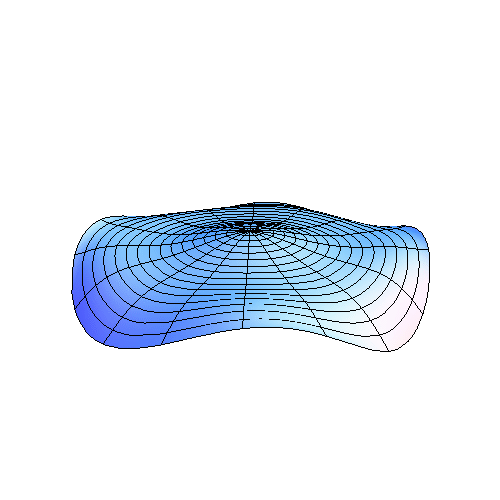
Levitated Spinning Graphene |
|
A primary motivation behind the creation of the Joint Quantum Institute at the University of Maryland is to foster cross fertilization and collaboration at the forefront of research in condensed matter physics and atomic and molecular physics. To this end, we have recently applied the same technology used to trap single ions to levitating micron sized flakes of graphene. This research is very preliminary (the flakes we have studied are likely irregularly shaped and multilayer graphitic platelets), but we have already demonstrated that the flakes can be spun up to over 1 MHz rotation rates when they are illuminated with circularly polarized light. Because of the ability of graphene to withstand the tensile stress from centrifugal forces, it is possible that micron-scale flakes of graphene will be able to be spun up to over 1 GHz using this technique |
|
Silicon-based quantum computing home page B. E. Kane November, 2010 |

|
Future research directions There are several exciting applications for this technology in the development and measurement of graphene and other two dimensional (2D) materials: · Measurement of 2D materials under conditions of high temperature or high tensile stress. Levitated graphene, because it is not attached to a substrate and can be in a high vacuum environment, can be heated to extreme temperatures. High tensile stress can be applied by rotation at high frequencies. Measurement in these extreme conditions should be possible using the techniques we are developing. · 2D crystal modification and growth in a levitated environment. It is possible that the unique environment provided by levitation will facilitate new approaches to 2D crystal growth and modification. · Controlled deposition of oriented levitated flakes onto a substrate. Charged graphene flakes may be able to be focused and deposited onto a substrate in the same fashion that electrons are focused in an electron microscope. Orientation may be controlled by spinning. This technique would enable, for example, the ”passivation” of a reactive surface created in UHV by a monolayer of graphene. Also, 2D crystals created in a levitated environment could be deposited onto a substrate for characterization and measurement. · Flexural phonons and adiabatic cooling The thermodynamics of 2D materials at low temperature is known to be dominated by flexural phonons, i.e. motion perpendicular to the 2D sheet (see the animation above). Levitation may be particularly suited to measurements of flexural phonons, since there is no substrate present to constrain flexural motion. Since the speed (and free energy) of flexural phonons depends on the stress in the sheet - which in turn can be controlled by the sheet’s rotation speed, it may be possible to cool a levitated flake of graphene by “adiabatic detensioning” of the sheet during deceleration of its rotation speed. · Physics of a rotating 2D system. Finally, the charge carriers present on rotating graphene may display new physics associated with rapid rotation. These phenomena may be probed via measurement of torques on the graphene flake that are detected optically.
|